Is a Medical Assistant Career Right For You?
Updated January 2025 By: Jenn Hall
From performing necessary clinical and administrative tasks to communicating with patients, medical assistants are valuable members of the healthcare team. Looking ahead, the U.S. Bureau of Labor Statistics medical assistant positions will increase by 15% through 2033, which is much faster than average. This is good news for those entering this career field. But how do you know if this is the right career move for you?
Before you choose a career as a medical assistant, it’s important to understand the role and responsibilities you may have, as well as the earning potential, work environment, and training needed to successfully enter this field.
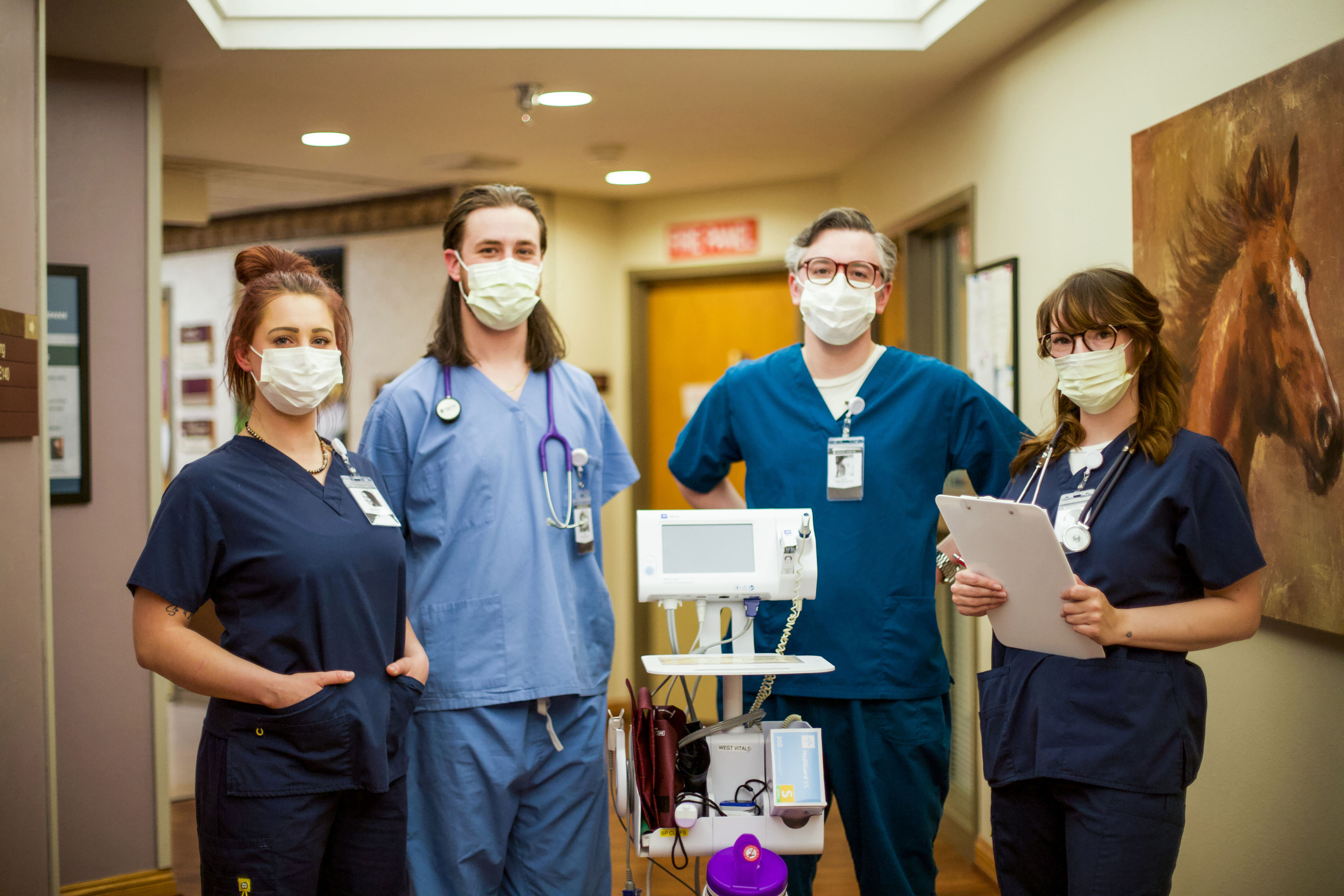
What do medical assistants do?
Medical assistants may be responsible for a variety of clinical and/or administrative tasks, such as:
Clinical tasks
- Taking medical histories
- Explaining treatment procedures to patients
- Preparing patients for examinations
- Assisting the physician during examinations
- Collecting and preparing laboratory specimens
- Performing basic laboratory tests
- Instructing patients about medication and special diets
- Preparing and administering medications (e.g., vaccinations/immunizations), as directed by a physician or other licensed provider
- Transmitting prescription refills as directed
- Handling wound care and changing dressings
Administrative tasks
- Answering telephones
- Greeting patients
- Updating and filing patient medical records
- Scheduling appointments
- Arranging for hospital admissions and laboratory services
Medical assistants also have the opportunity to choose a healthcare specialty. For example, some medical assistants may specialize in pediatrics, family medicine, geriatrics, cardiology, dermatology, or numerous other areas of medicine.
Although core responsibilities will be present across all medical assistant roles, some of the specific procedures, tests, or physician support needs will vary by specialty. According to Specialty CMA, “In addition to their clerical duties, Pediatric Medical Assistants measure and monitor patients' vitals from visit to visit for changes in growth and development, collect lab work, give immunizations, educate patients and parents on new policies and health information, and most importantly, ensure that these young patients feel safe and secure in a medical environment.”
Where do medical assistants work?
Medical assistants may work in a variety of healthcare settings, including physicians' offices, hospitals, outpatient centers, urgent care clinics, long-term care/assisted living facilities, dental offices, or other medical centers. According to the BLS, 56% of medical assistants were employed in physicians' offices in 2023.
How much do medical assistants make?
According to the U.S. Bureau of Labor Statistics, the median annual salary for a Medical Assistant is $42,000. There are several factors that may affect the earning potential for a medical assistant, including:
Work environment
The type of medical facility that a medical assistant works in will impact their projected salary. For example:
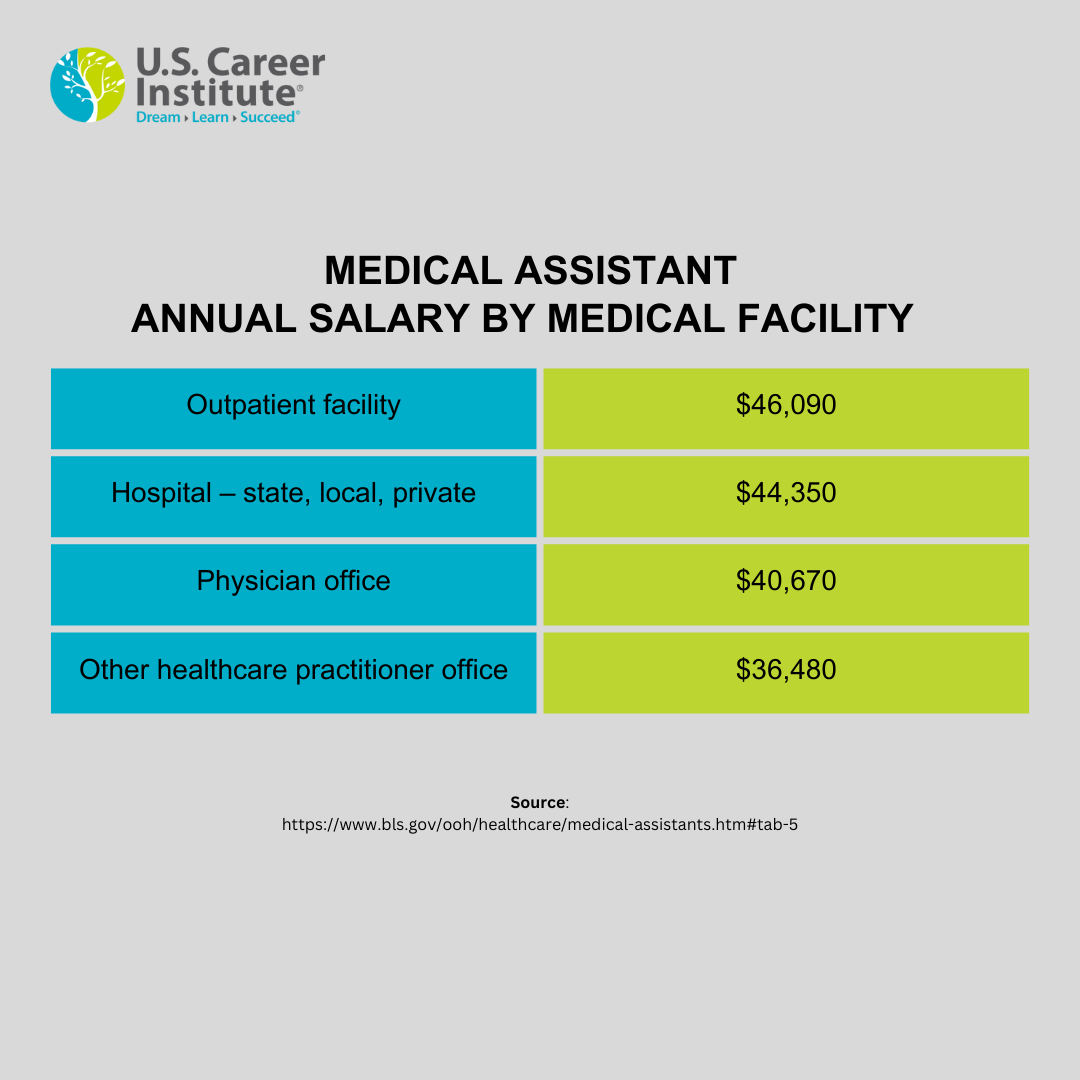
Geographic location
The state in which a medical assistant is employed will affect their earning potential. For example, states with a lower cost of living will have lower salaries, reflecting the economic need of the area. The same is true for states carrying a higher cost of living.
According to the BLS, the top five states with the highest annual mean salaries for medical assistants are:
- Washington – $53,780
- Alaska – $52,530
- California – $50,900
- District of Columbia (DC) – $50,110
- Minnesota – $49,740
What is the mean salary range for medical assistants in your state?
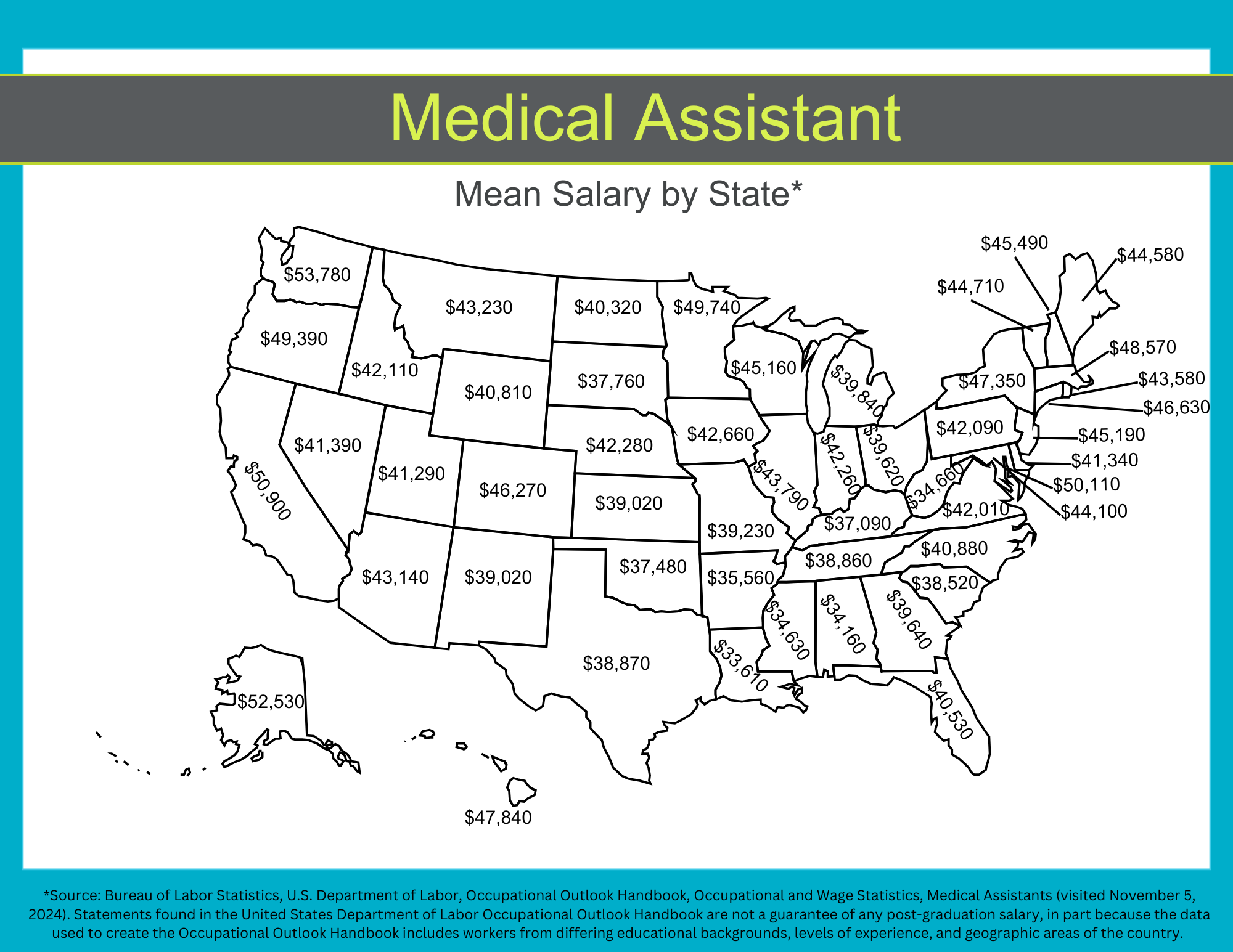
Education
Most employers require a minimum of a high school diploma, GED, or equivalent to be considered for an entry-level position as a medical assistant. Many employers require candidates to understand basic medical terminology, processes, and procedures through direct experience and/or an accredited medical assistant training program.
Medical assistant training programs may result in a training certificate or degree.
Medical assistant training programs may be offered online with a self-paced training curriculum as you’ll find with U.S. Career Institute, an online program with a more structured learning path and required class times (virtual or in-person), or an in-person, instructor-led program. You may find programs available through a community college, vocational or trade school, online institution, or other educational providers.
Whether you prefer to learn online or in person, accreditation is important. U.S. Career Institute is accredited by the Distance Education Accrediting Commission (DEAC). The DEAC is listed by the U.S. Department of Higher Education as a recognized accrediting agency. To maintain our accreditation, our curriculum, faculty, administrative procedures, and policies are regularly reviewed to ensure that we continue to meet high standards of quality.
A medical assistant training program will prepare students with foundational knowledge and understanding of basic medical terminology and practices, including:
- Medical terminology
- Human anatomy
- First aid procedures
- Medical insurance basics
- Front office procedures
- Pharmacology
- Patient therapies
- Communication skills
- Medication administration procedures
- Patient engagement practices
- Healthcare ethics
- Procedures for taking vital signs
The goal of a medical assistant training program is to prepare students to enter the field of medical assisting with confidence and the knowledge to perform their jobs competently. Additionally, it can help students qualify for and successfully pass chosen industry certification exams, which may be required for employment.
According to Salary.com, the average annual pay for a non-certified medical assistant is $37,837, whereas the average annual salary for certified medical assistants is $42,991.
Industry certifications
Although not required in all circumstances, an industry certification can provide new or expanded opportunities for medical assistants.
Medical Assistant Certifications:
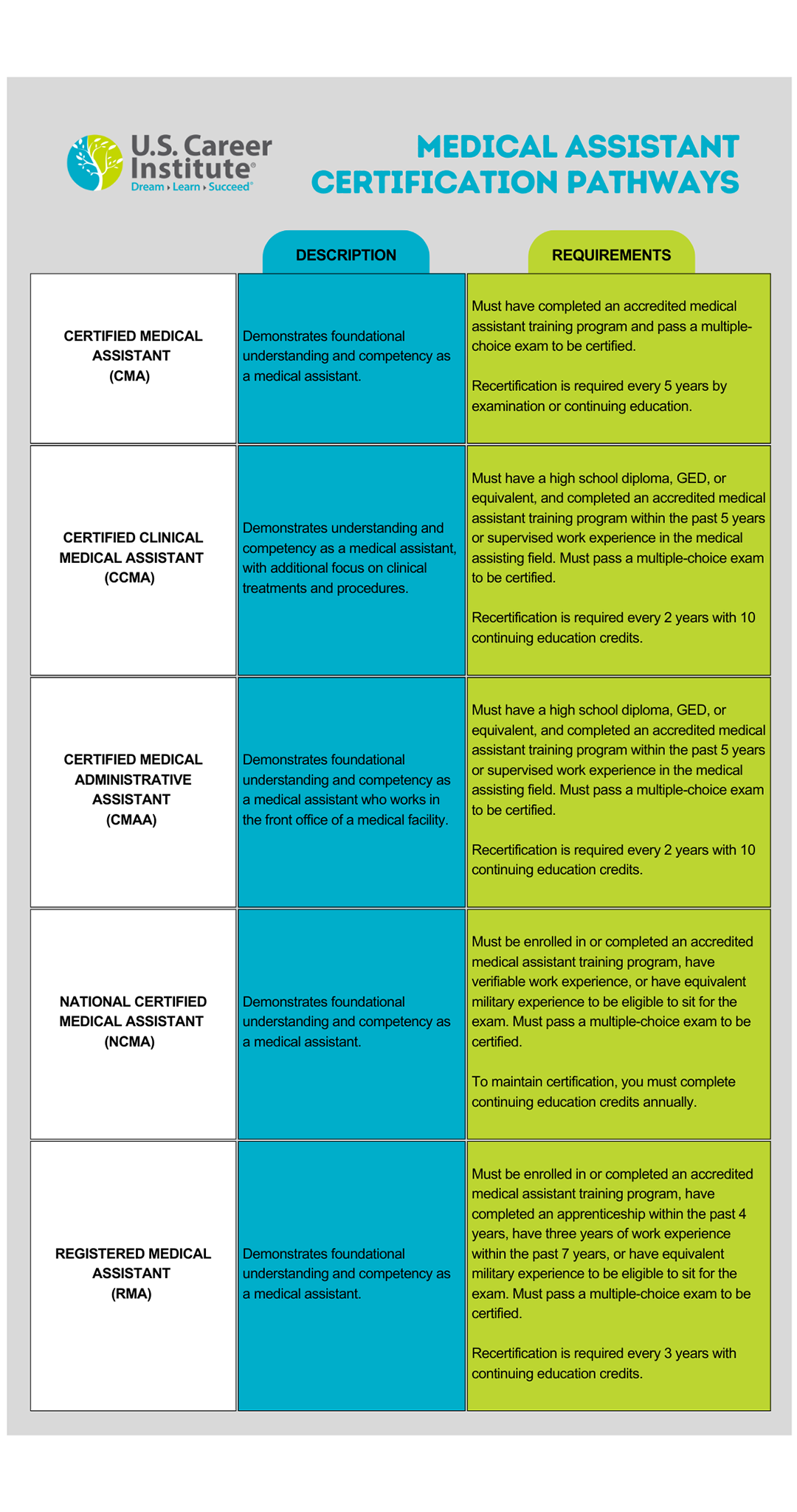
U.S. Career Institute’s medical assistant training program is designed to prepare students to sit for the Certified Clinical Medical Assistant (CCMA) exam.
Currently, only the state of Washington requires medical assistants to be licensed or certified. In the state of Washington, medical assistants must be licensed in one of four categories:
- Medical Assistant - Certified: Must complete training from an accredited education provider, complete a registered apprenticeship program administered by the state of Washington, and earn an industry-recognized certification.
- Medical Assistant - Hemodialysis Technician: Must complete hemodialysis training and be nationally certified as a hemodialysis technician. They also must have a current cardiopulmonary resuscitation (CPR) certification.
- Medical Assistant - Phlebotomist: Must complete phlebotomist training from an accredited education provider and earn an industry-recognized certification.
- Medical Assistant - Registered: Must be endorsed by a licensed healthcare practitioner who attests to the medical assistant’s competency to perform specific tasks. This endorsement is valid for the duration of the medical assistant’s tenure at that healthcare facility. A new credential is required if the individual changes jobs.
Although not required in every state, some employers may seek candidates who have completed certification prior to employment. Additionally, some states may have additional guidelines for certain tasks, such as administering medication or injections. These skills do not necessarily need to be met prior to employment as an entry-level medical assistant as some can be achieved through on-the-job training.
Licensure requirements may vary by state. Be sure to check with your local state board to determine medical assistant licensing needs.
Work experience
The longer an individual works as a medical assistant, the more work experience they accumulate and the greater influence that experience may have on their compensation.
According to the AAMA, a medical assistant with a CCMA credential in New England can expect to see their earning potential rise with relevant work experience:
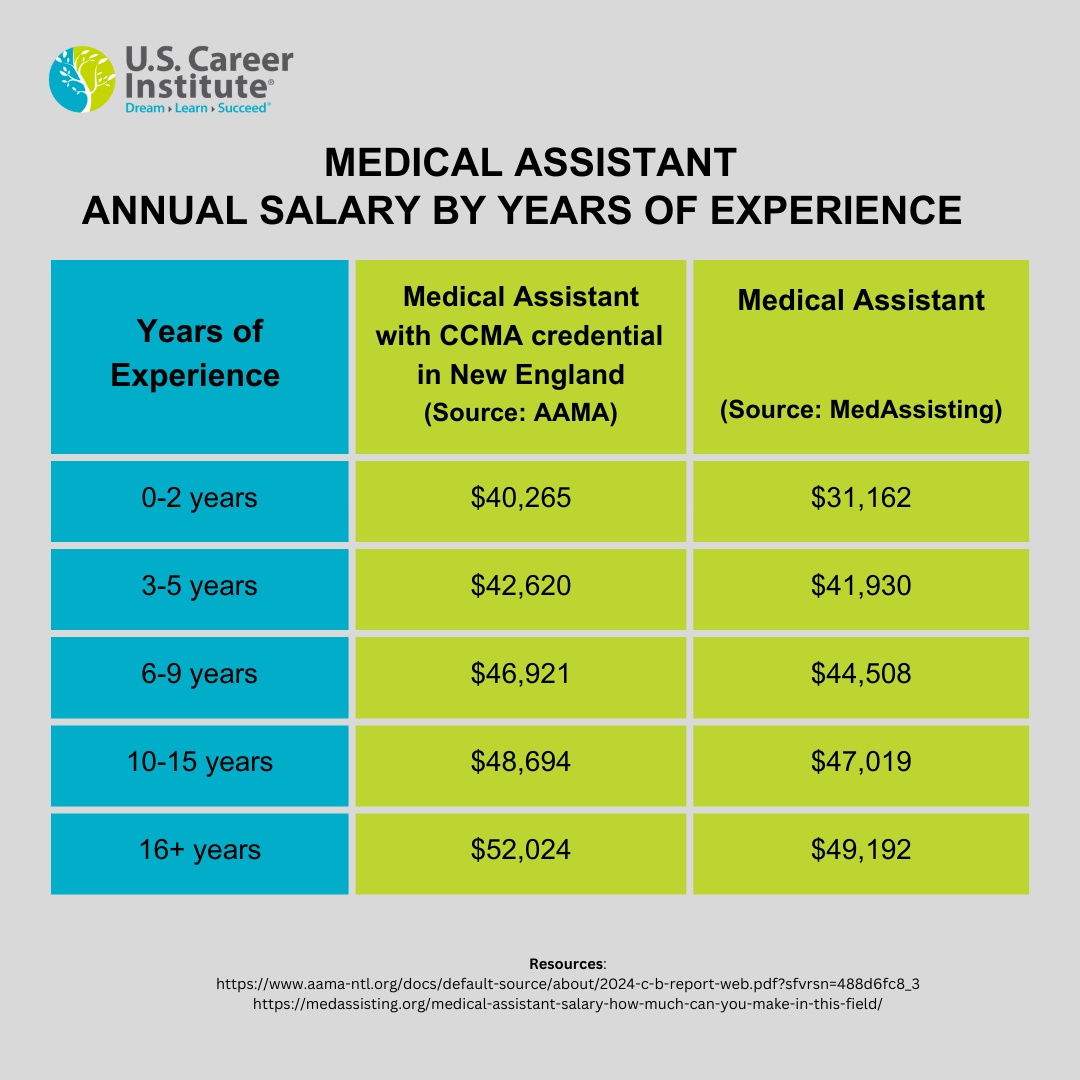
Getting started as a medical assistant
Healthcare careers are in high demand, with medical assistant roles expected to increase much faster than average through 2033, according to the BLS. Medical assistants are integral members of the patient care team. Not only do they interact directly with patients to schedule appointments and other administrative tasks, but they may also provide much-needed clinical support by taking vital signs, administering medications or vaccines, and handling laboratory tests.
The first step toward entering this rewarding career is to enroll in an accredited medical assistant training program. There are a number of training programs available, with varying formats, durations, and costs associated. Before choosing a training program, be sure to ask meaningful questions, such as:
- Is the training program accredited?
- Will the training help prepare me for an industry certification exam?
- How is the training program delivered (e.g., online but with required meeting times, online and self-paced, in-person)?
- How much will the program cost?
- Will I need to travel to the school? If so, how will that affect my life?
- What does the program content include?
- What type of technology do I need to complete the program?
- Who will teach the training?
- Is there career guidance available after graduation?
Only you can decide which program is right for you. As Sir Francis Bacon once said, “Knowledge is Power.” The more you know, the better decision you’ll make.
Helpful resources:
- Medical Assistant Certificate program at U.S. Career Institute
- Medical Assistant Associate’s Degree program at U.S. Career Institute
- American Medical Technologists – RMA certification
- American Association of Medical Assistants (AAMA) – CMA certification
- National Center for Competency Testing (NCCT) – NCMA certification
- National Healthcareer Association – CMAA certification
*Bureau of Labor Statistics, U.S. Department of Labor, Occupational Outlook Handbook, Occupational and Wage Statistics, Medical Assistants (visited November 5, 2024). Statements found in the United States Department of Labor Occupational Outlook Handbook are not a guarantee of any post-graduation salary, in part because the data used to create the Occupational Outlook Handbook includes workers from differing educational backgrounds, levels of experience, and geographic areas of the country.

